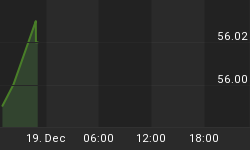Below is an extract from a commentary posted at www.speculative-investor.com on26th August 2004.
Our current view on how gold and silver will perform relative to each other over the next several years won't come as a surprise to long-time TSI readers because this view, as well as the reasons behind it, was first outlined about three years ago and has since been reiterated a number of times. Our expectation, in a nutshell, is that the silver/gold ratio will either oscillate within a wide trading range as it did during the 1970s (excluding the huge upward spike that resulted from the Hunt brothers' attempt to corner the silver market during the second half of 1979) or it will trend lower as it did during the 1980s. In other words, we don't expect silver to out-perform gold during the current decade.
The aforementioned view tends to be an unpopular one because there is a lot of information that points to silver's supply/demand situation being incredibly bullish. We don't dispute this information and are, in fact, very bullish on silver's prospects as far as the next few years are concerned. We do, however, think that gold has the superior risk/reward ratio.
One thing we've learnt over the years (hopefully we've learnt at least one thing) is that when it comes to gold, silver, and even a purely industrial metal such as copper, a detailed and generally accurate analysis of the supply/demand fundamentals has as much chance of coming to the wrong conclusion as the right one as far as future prices are concerned. This is largely because a traditional supply/demand analysis often won't correctly account for speculative and investment-related demand. It is also because the fundamentals can, and often do, change quite dramatically within any 2-year period for reasons that are often not apparent in advance. For example, it was possible to have a bullish outlook on copper during the final quarter of 2001 if, like us, you understood what the effects of the Fed's aggressive inflation policy would be, but at that time the consensus view was that the copper price would be weighed down by massive surpluses for many years to come.
In the case of gold versus silver, we'll use the below chart to illustrate the reasoning behind our preference for gold. The chart compares the silver/gold ratio with the S&P500 Index and shows that silver has, since 1990, been strong relative to gold when the stock market has been trending higher and weak relative to gold when the stock market has been trending lower. The implication is that if the stock market were very weak over the coming 6-12 months, as per our current expectation, then gold would be likely to out-perform silver over this period.

When we look at the silver/gold ratio over the past 34 years we find that its performance since 1990 is not anomalous. Specifically, we find that silver tends to out-perform gold during periods when confidence in financial assets is rising and under-perform when confidence is falling; which simply confirms that gold is the ultimate counter-cyclical investment.
Even if we are correct to be long-term bears on the US stock market and the US economy there will undoubtedly, over the remainder of this decade, be other periods like the second half of last year and the first quarter of this year when both the economy and the stock market appear to be going 'great guns'. And during such periods silver will likely out-perform gold by a wide margin. Furthermore, silver should do well -- just not as well as gold -- during the 'down times' because it should be the recipient of increased investment demand. We therefore think that silver and silver stocks have a place in an investment portfolio, just not as big a place as gold and gold stocks.
















